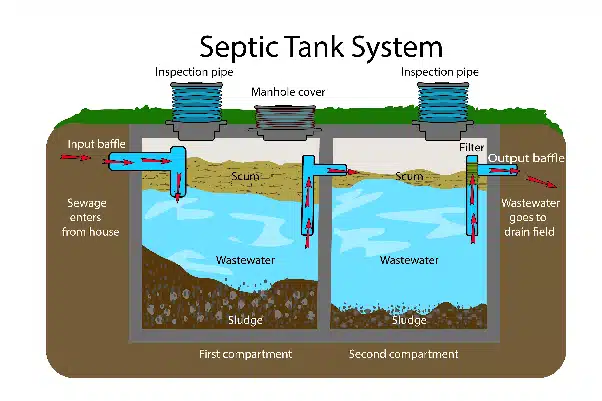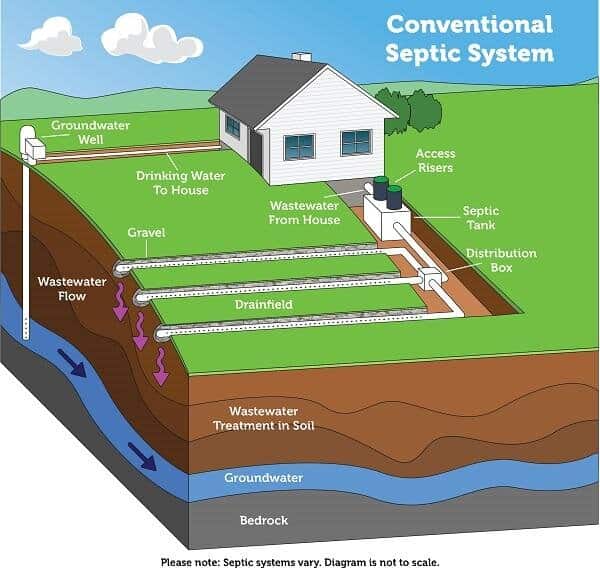A septic system is a decentralized wastewater treatment system commonly used in rural areas where centralized sewer systems are not available. It consists of a septic tank and a drainfield, and its purpose is to treat and dispose of household wastewater in an environmentally safe manner.
The septic tank is a large, watertight container buried underground, usually made of concrete, fiberglass, or polyethylene. It serves as the primary treatment chamber where solid waste and heavy particles settle at the bottom as sludge, while lighter particles such as grease and oil float to the top as scum. The remaining liquid, known as effluent, flows out of the tank into the drainfield, where it is further treated and purified by soil microorganisms before being absorbed into the ground.
Proper maintenance and regular inspections are essential to ensure the effective and safe operation of a septic system. This may include regularly pumping out the sludge and scum from the tank, avoiding the disposal of non-biodegradable materials and harsh chemicals down the drain, and being mindful of the types and amounts of household cleaners and detergents used.
In conclusion, septic systems are crucial in managing household wastewater in areas without access to centralized sewer systems. Proper maintenance and care are necessary to ensure their effective and safe operation.


